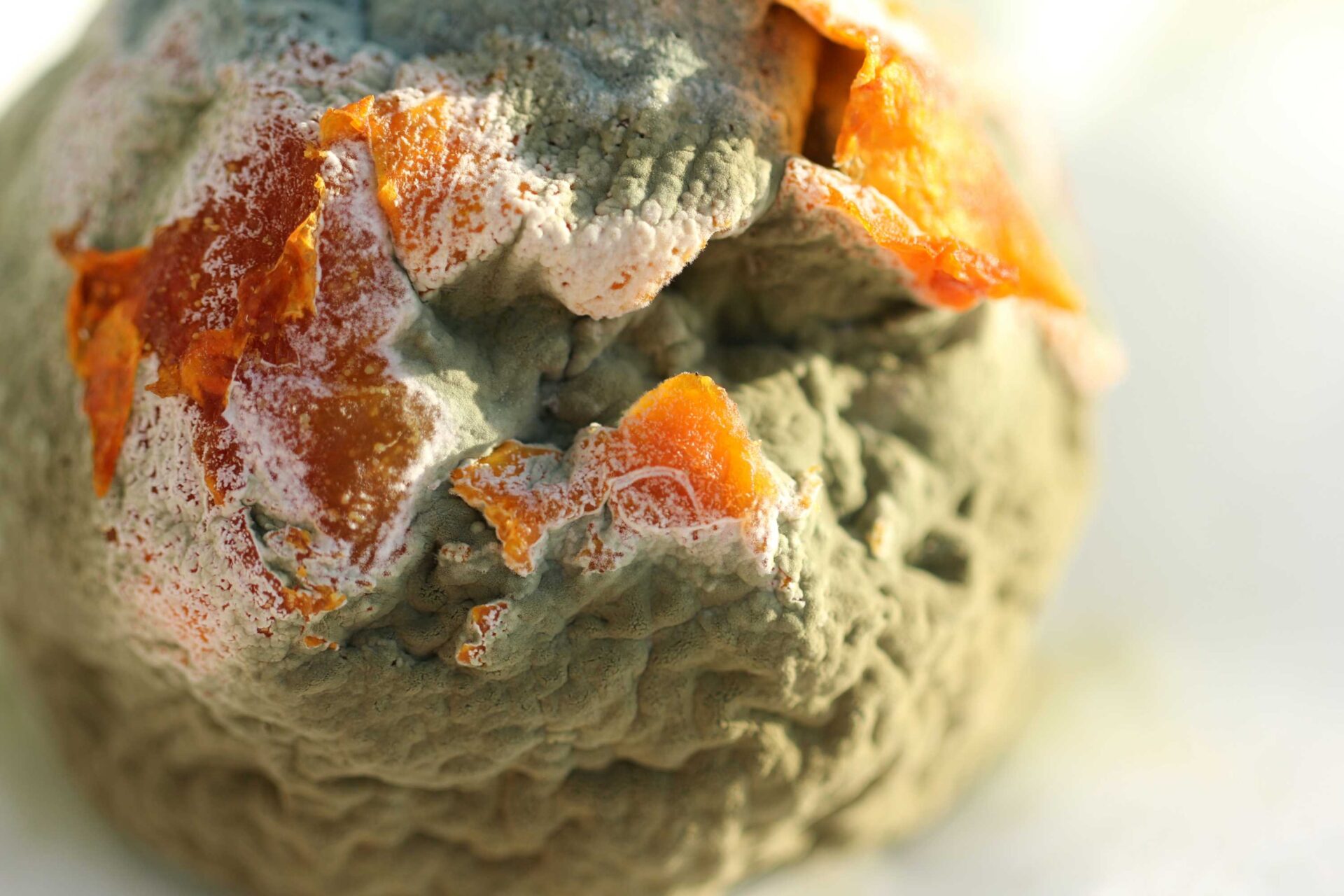Moulds in the home – what can sensitize us?

We distinguish several species of mould that we can come into contact with in the comfort of our homes:
- Aspergillus – toxins from this type of mould affect the immune system, weakening it. They contribute to severe bronchial asthma and allergic rhinitis.
- Alternaria – can also cause dangerous asthma attacks, chronic rhinitis, and conjunctivitis [1].
- Cladosporium – often develops in dirty fridges or on window frames with moisture and in poorly ventilated rooms [6]. Causes symptoms of inhalant allergy.
- Penicillium – concentrations of this mould can increase during renovations, cleaning of cellars, and granaries. It can also be found on fruit and bread. It can exacerbate respiratory hypersensitivity and cause toxic reactions [1].
For allergy sufferers, it will not only be important which mould they come into contact with, but also how many of its spores are in the air. And this applies both inside the house and outside. The concentration of mould is usually higher during dry, sunny and windy weather.
In contrast, in enclosed spaces, an increase in spore concentration occurs with increased temperature [2].
Moulds in the house
You do not even have to leave the house to be exposed to fungal spores. An allergic reaction can occur much faster and be more severe if we come into contact with several types of these allergens at the same time [2]. So where exactly can we find moulds in our four corners?
- In the bathroom,
- toilet,
- kitchen,
- the cellar,
- on the veranda,
- on the balcony,
- in plants, in pet hair,
- in wallpaper, wood, canvas, and dust,
- on carpets [1].
Symptoms of mould allergy

The body’s reaction caused by an allergy to moulds includes:
- allergic rhinitis – characterised by sneezing, itching, and nasal discharge,
- asthma – fungal spores that enter the alveolar surface of the lungs can cause inflammation of the lung tissue,
- allergic bronchopulmonary mycosis – this results in permanent inflammation of the bronchi, caused by their dilatation, in asthmatic patients,
- allergic sinusitis – fungal balls form in the sinuses and fungal shreds are visible in the mucus,
- hypersensitivity pneumonitis – otherwise known as alveolitis, which can lead to a chronic disease with irreversible damage to the lungs,
- atopic dermatitis – a chronic inflammatory skin disease associated with high levels of antibodies to mould allergens in the blood [3].
Diagnosis of mould allergy
How do we know if we are allergic to mould spores? First of all, it is important to observe one’s own symptoms when staying in rooms with moulds. Among the diagnostic methods available are skin or blood tests, which will indicate which types of mould we are allergic to [5]. If a patient is found to be allergic to these allergens, they should be avoided in the first place. On the other hand, if the symptoms continue to bother him or her, pharmacological treatment is worthwhile. However, the best of all methods is desensitisation, but only if a positive test result indicates hypersensitivity to the selected Alternaria allergens. Another condition is that there are no health contraindications to immunotherapy [5].
Protection against moulds in the home
How to prevent mould? The following tips can be applied not only by allergy sufferers, but by anyone who wants to protect themselves from mould.
- Do not apply wallpaper to walls, as the food of mould is as much the paper as the glue with which it is stuck.
- Dry damp clothes and shoes when you arrive home, as well as towels and cloths after using them.
- Don’t forget to ventilate your home and install fans where possible.
- Try to avoid dark and damp rooms in the house, as well as saunas and greenhouses [4], especially those areas where mould stains are visible.
- Pay attention to potted plants and aquariums, as they are a common source of mould.
- Beware of eating out-of-date foods and those with visible mould [5].
Natalia Gajek
________________________
translation: Julia Majsiak






